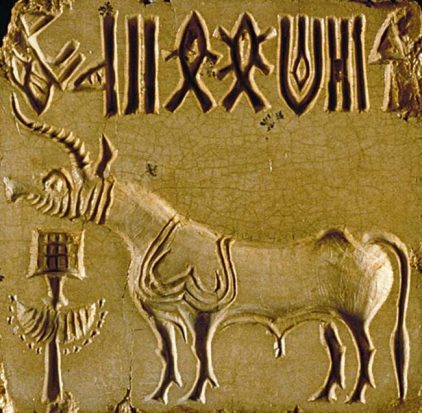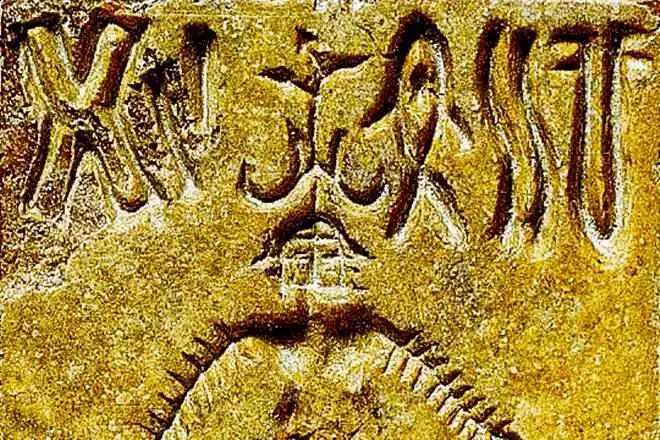By Monidipa Dey
It was long back in the 1920s, when excavations at various sites across north-west India and Pakistan brought forth to light the presence of the Harappan civilisation. One among the world’s oldest civilisations, the settlements were found as scattered ruins of large well-planned brick-laid cities neatly laid around the Indus and Ghagghar river belts. Despite a large number of archaeological artefacts found from the 1,000 plus settlement sites, the civilisation largely remained a mystery. This was primarily because unlike the Egyptian hieroglyphs, or the Mayan writing, Harappan scripts remained undecipherable, despite innumerable attempts to read it.
Thus, there is no concrete information available to read the names of the Harappan kings (if any), gods, or even the common people. The Indus script still remains an unknown writing system, a mystery where the inscriptions appear short, with no more than five signs on the average.
Also Read | Jaisalmer’s ‘haunted’ Kuldhara village: Tale of a town abandoned two centuries ago
In 1966, the well-known archaeologist B. B. Lal after extensive studies concluded that the Harappan texts were to be read from right to left, and it is, as the well-known scholar on Harappan civilization Bryan Wells sums up, just about the only thing Harappan researchers can agree on. Beyond that, there is not much consensus on how to read the scripts, with many scholars attempting and proposing various speculative decipherments right from the time of its discovery.
Besides the problem of not being able to decipher the script, some researchers also contend that there were no languages present in the Harappan civilisation, and the inscriptions were, in reality, an alternate system comprising of symbols, akin to emblems, that merely express some general meanings. For many years, researchers on the Harappan scripts have been applying statistical data to show the frequent clustering of certain symbols that tend to imply words (or syntax), thus countering arguments that Harappan scripts do not represent a true form of writing. Computer scientists too have shown using conditional entropy that the Harappan scripts tend to resemble highly ordered writing systems, similar to computer code sequences or DNA codes. Various probability theories also show that the Harappan inscriptions show a certain extent of predictability, which is a common feature of true writing.
Recently, an IT professional from West Bengal Bahata Angshumali Mukhopadhyay in her paper titled as Interrogating Indus inscription to unravel their mechanism of meaning conveyance that was published in the Palgrave Communications (Nature group journal) claims that most of the Indus Valley scripts were logographic where one symbol or letter denoted an entire word (as seen in the Chinese writing system), and was not based on phonography (speech that is based on sound). In her paper, Bahata Angshumali further claims that the Harappan scripts are comparable to coded messages seen on modern-day stamps, coins, and tokens.
In her paper, Ms. Angshumali has conducted an epigraphic analysis of the inscriptions of the Harappan civilization, which aims at showing that like the Mesopotamian proto-cuneiform administrative tablets, the Harappan seals too “were formalized data-carriers that used both document-specific and linguistic syntaxes to convey messages.” Her paper states that the “Indus signs represented different content-morphemes and functional-morphemes—not phonograms used for spelling words—the majority of the inscriptions were logographic.” Ms. Mukherjee has categorized some of the Harappan logograms into 9 different functional classes, researching on how each sign-class has different roles to present full messages through short scripts.
According to Ms. Mukherjee, the seals and tablets found at sites were used for controlling various commercial transactions in the Harappan civilisation that had strong trade relations with other contemporary civilizations of the world; hence the scripts are comparable to the structured messages found on tokens, currencies, and stamps. Thus, the scripts, according to her, are more of formula like texts that encode certain data in a rather pre-defined manner, instead of denoting some free-flowing narrative. Ms. Mukhopadhyay, who has based her work on the compilations made by the well-known scholar and epigraphist Iravatham Mahadevan, feels that her paper could help in the deciphering of Harappan script in the near future.
(The author is a well-known travel writer. Views expressed are personal.)



















